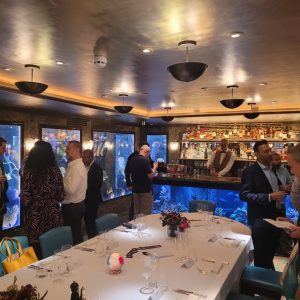
"If there is a company that is not aware of these trends [IoT, big data, and cloud], they will be left behind. Every single vertical is taking advantage of the disruption of these things," said Microsoft Azure CTO, Mark Russinovich, as he sat down to speak with CBR’s Joao Lima.
Focusing on the future of cloud, specifically Microsoft’s Azure services, Russinovich stated that the industry is ‘in the middle of an explosive growth of cloud’, with the CTO expecting "our capacity to double in a year and half to two years."
As a key industry player, Azure is one cloud which needs to be at the forefront of any cloud innovation. With that in mind Joao Lima pressed the CTO about the future of Azure, looking at key innovations such as AI and issues such as security.
CBR: Can artificial intelligence (AI) make its way into Azure?
MR: I think that the big question is where is machine learning going [before we speak of AI]. The jury is out on finding exactly what artificial intelligence is and then saying "are we going to get there?"
When it comes to Azure and machine learning, IoT and big data all work together as a virtuous interrelated group of technologies that reinforce each other. Cloud is fuelling this.
Every single vertical, be it is cars or sports or weather forecasting, is disrupted by this kind of technology.
CBR: Why only now are we hearing so much about AI?
MR: Cloud is democratising artificial intelligence. One can go to Azure and run Azure machine learning studio which has an ecosystem of algorithms including things like predictive maintenance.
If we look at a business that might have been interested in applying machine learning to a problem a few years ago, they had this challenge of "where do I store all this data". It was too expensive, and they needed to be careful about storing data that might not be the most useful. They ended up throwing away a lot of data.
Today’s storage is so cheap that we just see customers storing all data in the cloud. Machine learning is empowered by data, without data there is no machine learning. It is a combination of things and that is what is causing the world to kick all these things off.
CBR: How do you keep up with Azure’s security and what trends in this space are you observing?
MR: We are never done with security, but the fundamental changes we have seen in the industry is a philosophy of assumed breach.
Of course we want a great defence, we want to keep hackers out, but we know hackers will get in. One flaw in the shield and they are in.
We need to deal with what happens when they are in. Our goal is to detect them once they are in and get them out.
CBR: Would you say no one should expect 100% security?
MR: Absolutely, there is no such thing. There is no 100% security, and once people embrace that, then that means "ok, so how do we detect them when they are in; how do we isolate them and how do we respond to get them out".
When it comes to how we detect them, it is a great example of where machine learning is being applied. It was already being applied in Azure with Identity Azure service directory.
This solution is looking at access patterns in their directory domain. Looking at individuals’ log ons, collections of log ons through their organisation and then flagging suspicious activity that shows signs of compromise.
CBR: What do you envision for Azure’s future?
MR: My vision is that with Azure, Microsoft creates a platform that is one where we are going to address all these scenarios [security, interoperability, and others] in a very consistent way, where just like other Microsoft services, there is commonality and integration across all of them.
[I have a vision where] we create an Azure platform that provides an end-to-end solution with consistency and predictability across them. At the same time supporting the ability for partners to plug in, and bring in their own solutions.That is ultimately what will make Azure a great place for an ecosystem that thrives: one that has a point of view and people can then have a bubble of Microsoft solutions for the whole thing; that partners can come in and add value, and their customers can have open choice to bring technologies they want to bring in. Basically take advantage of the infrastructure if they want.






